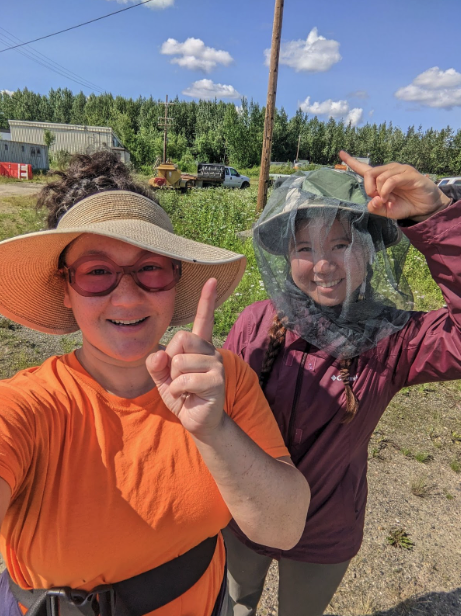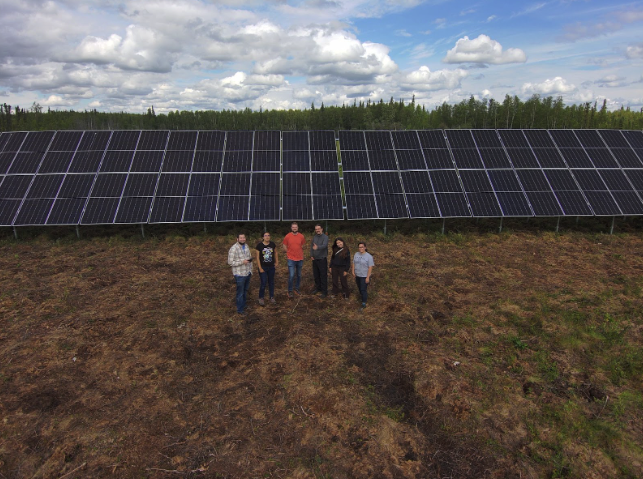ACEP intern powers through power system modeling
August 24, 2023

Vanessa Raymond (left) and Cathy Hou (right) map power poles in Galena, Alaska.
This article is part of a series highlighting ACEP’s 2023 cohort of eighteen undergraduate interns. To read about other projects and learn more about the program, please visit the ACEP Internship Program website.
Hailing from Houston, Texas, Cathy Hou is a sophomore at Harvard University, majoring in computer science and minoring in environmental science and public policy. She is intrigued by the similarities and differences between energy in Alaska and Texas.
This summer, Hou worked as an ACEP’s intern on a synthetic model of a remote Alaskan microgrid with mentor Phylicia Cicilio. Her work mainly focused on generating and finding the metrics needed for both inputs into the model and validation of the completed model. She flew out to Galena, Alaska, one of the communities the team is interested in modeling, for fieldwork in mapping energy infrastructure, which will be incorporated into the finalized synthetic model.
Rural Alaska has a highly unique energy landscape with distinctive challenges such as harsh climates, low population density, geographic isolation, high energy costs, and a large reliance on islanded microgrids — local electric grids that are not connected to a wider electric power system. As a result, lots of research is being done on energy development in remote Alaska, but a public, synthetic model for a remote Alaskan microgrid still does not exist. Researchers have to continuously ask communities for private, real data before even testing their ideas. This project’s goal is to create a public, synthetic model with realistic features as a benchmark for researchers to use prior to obtaining private data.
Hou was able to experiment with a lot of different software and packages. She is thankful to Cicilio for giving her freedom to make her own decisions in the analysis and for assigning her to diverse tasks so she could gain more experience.
Hou’s work began with analyzing hourly load and generation data through Python to generate plots and aggregate statistics for Nome, Alaska. This will inform the team their synthetic model of Galena. She also mapped feeder networks of Nome and pulled distribution line lengths with ArcGIS, a needed input metric in their model. Using Google Earth Engine, she pulled the coordinates of all buildings in five remote communities, which represent nodes in the graph of a power system model.
“While generating data for communities, I’ve also learned the value of being flexible — knowing what to do with missing information and how to adjust based on the data we have,” she said.

Drone selfie of ACEP team members and Kartorium founders at the new solar array in Galena, Alaska.
Her trip to Galena was fruitful. While Hou had a “valuable refresher in certain skills, designing a curriculum in SQLite to teach database querying and even starting the design of a load-forecasting website using Flask, HTML, and CSS,” the trip gave her insight into on-the-ground fieldwork.
“I have gained a new appreciation for the process of collecting and cleaning data, as well as meeting and talking with local community members,” she said.
“Thanks to [Dr. Cicilio] and Audrey Eikenberry, [another ACEP intern] who I’m working alongside with, I’ve gotten to see the importance of power in all its forms and have become fascinated with the technology of microgrids throughout an extremely fun and rewarding summer!”
This internship is funded by the National Science Foundation Research Experiences for Undergraduates program. View the final presentation for this project on ACEP’s YouTube Channel. For more information on this project, please contact Phylicia Cicilio at pcicilio@alaska.edu.


